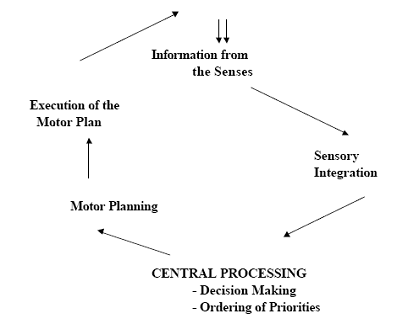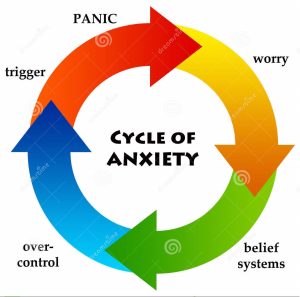Get the Best Treatment for Speech Disorder or Impairment
If you or your loved ones suffering from a speech disorder, language disorder, speech impairment or any kind of speech problem then you are in the right place. At HearingSol, you will get the perfect treatment for speech-related diseases by the best speech specialists who will not only cure your problem but will also help you in developing speech and building your confidence. As said, it’s better to be safe than to be sorry, so call on our toll-free number +91-9327901950 today and consult to our speech pathologist.
REQUEST A CALL BACK
Speech disorders can be defined as a type of communication disorder. It is also known as speech impairments or speech problems. This disorder affects the way a person creates sounds to form words and normal speech is disrupted. There are certain voice disorders which can be considered as speech disorders such as stammer, stutter, lisps, etc. If anyone is not able to speak at all, then he/she is considered mute.
How Speech Disorder Affects You?
Some people having speech disorders know what they want to say but are unable to articulate their thoughts. Such situations may lead to low self-esteem as well as the development of depression.
If you need any assistance or have a question about Speech Disorders, you can consult our HearingSol experts with your problem, feel free to call us on +91-9327901950. We are always here to help you.
Speech disorders can affect anyone, adults as well as children. Early treatment can help to correct these conditions but first, it’s important to determine the magnitude and type of speech disorder for its proper cure.
Classification of Speech Disorder
According to a source, Only 5% to 10% of the overall population contain completely normal speaking skills and its difficult to classify either the person has normal or disordered speech. You can classify speech disorder in 3 ways:
1. Phonemic and Phonetic
Phonemic and Phonetic deals with the ability to produce fluent sound. If the patient can produce the word with a similar and dissimilar sound more easily, meaningfully and constructively then they are classified as phonemic whereas, if the patient can not produce those sounds more often, consistently and constructively then they are classified as phonetic.
You can classify your speaking ability as Phonemic and Phonetic by pronouncing these words:
| crab, drab | clamp, cramp | bled, bred | flick, slick |
| sprig, spring | blob, slob, snob | cluck, pluck | frail, snail |
2. Stimulate Sound
If the patient can produce the correct speech /s/ sound by placing tongue, teeth and lips correctly and easily then the speech is normal. If they obtain difficulty or tongue depressor while producing speech /s/ sound then they have a speech disorder.
3. Unable To Produce Sound
If the patient can not speak in spite of their will or no sound ever produced then they can be classified as mute or dumb.
Some Common Speech Disorders
1. Apraxia
It is a motor speech disorder. Apraxia is caused by damage to the parts of the brain related to speech and communication i.e due to stroke or progressive illness.
There are various types of apraxia related to the communication issue. It influences the engine programming framework for speech production.
For example, pronouncing “potato” becomes “topato” or then “totapo”. In this condition, speech generation is very difficult.
The condition is, particularly with sequencing and sound production but sometime the common phrases may be spoken without any effort.
However, there is a disturbance in the cerebrum which sends the flag to the muscle for the development. This is important to deliver the sound.
The issues can lead to enunciation while additionally inflection and talking about pressure and rhythm errors.
2. Dysarthria
It is a motor speech disorder or paralysis which can affect the muscles of the mouth, face or respiratory system. The muscles become weak or have difficulty moving.
This speech issue is caused by muscle shortcoming, strokes, Parkinson’s disease, head or neck injuries, surgical accident, or cerebral palsy.
It can make talking really difficult. People may experience difficulty in understanding the speech of the affected person. Speech-Language pathologists can help.
Dysarthria if not treated can result in total loss of speech determined as Anarthria.
Dysarthria can also be produced by neurological injury which might hinder the control over the tongue, throat, lungs, and lips.
Swallowing difficulty(Dysphagia) is the effect present in dysarthria. You might experience the following effects in dysarthria:
- Running out of breath while speaking
- Slurred speech
- Drooling
- Facial paralysis
3. Speech-Sound Disorders
Children as well as adults, both can have a problem with producing speech or sound clearly. And the unclear speech might be difficult to understand.
They are termed as articulation( phonetic) disorder and phonemic disorder. The articulation disorder is categorized as difficulty in producing sound physically most preferably by kids.
Sounds might be overlooked or adjusted throughout the speech. A toddler may substitute sounds (such as “wabbit” instead of “rabbit”) or add irregular sounds to the words.
While figuring out how to talk, kids will regularly show some articulation issues. However, they are relied upon to “come out of this disorder” by a particular age. For that, they need articulation therapy.
Where phonemic disorder is categorized as difficulty in learning one word with different sounds. e.g. fi’ for fish or ‘at for cat and puh-lane for a plane.
4. Stuttering or Stammering
Stuttering or Stammering influences speech familiarity. It starts in childhood and, in some cases, it keeps on going all through life.

In this disorder the flow of speech is interrupted by the unwanted repetitions and prolongations of sound, additionally called “disfluency.”
Many individuals deliver brief disfluencies every once in a while. A few words are rehashed in stammering and others are gone before by “um” or “uh.”
Disfluencies are not a big issue. But, it can delay communication if a person delivers them in excess.
It approximately affects 1% of the adult population. For severe stuttering, long-term therapy and hard work are required to decrease the occurrence of disfluency.
5. Voice disorders
Voice disorder is an impairment that involves abnormal pitch, loudness, and quality of sound produced by larynx which affects the speech production.
6. Cluttering
Cluttering is the speech and communication disorder with a rapid rate of speech having poor syntax and grammar makes the speech difficult to understand.
Cluttering are most often confused with stuttering but they are distinct in their own ways. Shuttering is categorized as repetition and prolongation of sound while speaking where cluttering makes the communication hard with the disorganized words while speaking.
Causes of Speech Disorder
Commonly the causes of speech disorder are unknown however some of the causes of Speech disorders affect in the vocal cords, muscles, nerves, and many other structures within the throat of the affected individual.
Some of the causes include:
- Vocal cord damage due to vocal abuse or misuse
- Hearing Loss
- Muscle weakness: A neurological injury also causes dysarthria, a motor speech disorder in which the muscles of the face and mouth have difficulty in moving or becomes weak. In dysarthria our respiratory system also becomes weak. Articulation, a process of producing sounds happens in both children and adults due to many causes of speech disorders. Sometimes children have difficulty with certain phonemes which causes Misarticulation disorder.
- Polyps or nodules on the vocal cords
- Vocal cord paralysis
- Brain damage: Damage to the posterior parietal cortex of the brain causes Apraxia. Apraxia is a motor speech disorder in which an individual has difficulty in motor planning to perform a particular task.
- Respiratory weakness
- Drug abuse
- Intellectual Disability (Mental health issue)
- Neurological Disorder
People with certain medical or developmental conditions may also experience speech disorders. Some of the common conditions that may lead to speech disorders:
- Autism: Each and every person with autism is different from the other. A speech disorder is one of the characteristics of autism spectral disorder.
- Strokes
- Laryngeal cancer
- Huntington’s disease
- Dementia: Dementia is not a disease but it causes mental impairment in a person. It not only affects memory, thinking, language but also the behavior and judgment of an individual.
- Oral cancer
- Physical Impairment such as cleft lip and palate
- Attention Deficit Hyperactivity Disorder (ADHD)
- Amyotrophic Lateral Sclerosis (ALS), also known as Lou Gehrig’s disease
- Parkinson’s diseases
- Alzheimer’s disease
In some cases, Speech disorders may be hereditary which can develop over time.
Symptoms of Speech Disorder
The symptoms of the speech disorder depending upon its cause are several. Some of the common symptoms are:
- Elongating words
- Distorting of sounds while talking
- Repeating sounds, especially those who stutter
- Adding extra sounds and words like puh-lane for a plane.
- Blinking several times while talking
- Making jerky movements usually involving the head movement when uncomfortable.
- Visible struggle and frustration while communicating
- Taking frequent pauses while socializing.
- Hoarseness, or speaking with a raspy or gravelly voice
Diagnosis of Speech Disorder
There are so many tests available for the diagnosis of speech disorders. Some of them are mentioned here.
1. Denver Articulation Screening Exam
The Denver articulation screening exam (also known as DASE) is the most commonly used testing system for the kids with a speech disorder. This testing system plays an important role to diagnose articulation disorders.
The test evaluates the pronunciation clarity in children between the ages of 2 and 7 and the results are compared with the standardized norm for that age.
This is a five-minute test which uses various exercises to assess the child’s speech. It’s a unique test as it was designed for the trained non-professional workers.
Before thirty-four sound elements were administered to over 1500 kids, all were two and one-half to six years of age. The four sounds were eliminated from further study.
In their production of the remaining 30 sounds, no significant differences were noted. The observed data in the pronunciation of the 30 sounds were combined for all kids and displayed in a percentile rank format for each age category.
The kids with the fifteenth percentile as the cutoff point were referred to as abnormal children. Test-retest reliability was 0.95. The Application of the test to large populations of children is done nowadays to diagnose a child with a speech disorder.
2. Early Language Milestones Scale 2
This test was created by a neurodevelopmental pediatrician ” James Coplan” in 1993. The ELM scale is an instrument for language screening for infants of 3-4 months. It divides 43 items(like a laugh, alert to voices, pointing on objects, etc) into 3 parts
- Auditory expressive
- Auditory receptive
- And visual
The examiner examines child behavior in response to these items and prepares the recording form. The recording form contains a pass/fail rating and score on the basis of pass/fail method and point scoring method performed. It determines a child’s language development. It also identifies delayed speech or language disorders, if any.
Early language milestones (ELM) scale kits are available in the market in Rs 13,820 for examining the progress of the child having the speech delay or disorder.
3. Peabody Picture Vocabulary Test (Revised)
The Peabody picture vocabulary test was administered in 1959 and it estimates the person’s verbal intelligence. Since then it has been revised many times.
This test measures a person’s receptive(hearing) vocabulary and speaking ability for standard American English.
The PPVT was designed for the use of child and adults from 2½ to 40 years. The person will listen to words and choose pictures to describe those words. The obtained score can be converted into percentile and named as IQ Score.
These tests are also been using in the rehabilitation process for the person with multiple physical impairments, but hearing and vision ability intact.
People with severe intellectual disabilities or blind won’t be able to take this assessment.
Treatment for Speech Disorder
In most cases, mild speech disorders may not require any treatment. As some of the speech disorders simply go away.
Others get improved with speech therapy but others require medical attention by a specialist in phoniatrics.
Treatment varies according to the type of disorder. A speech therapist will help you in muscle-strengthening exercises for the face as well as throat.
You’ll learn to control your breathing while speaking. Muscle-strengthening exercises along with controlled breathing help to improve the way words sound. This helps to learn the ways to practice smoother, and fluent speech.
Nervousness, embarrassment, or depression may be experienced by people with speech disorders. School-aged children are often placed in a special education program who experience speech disorder.
Talk therapy will be helpful in these situations as it will enable the sufferer to cope up with the condition. It will also suggest ways to improve the outlook of your condition.
More than 800,000 of the students placed in a special education program are suffering from speech and language impairment. And this number does not include any children having deficiency lower in speech disorder i.e deafness.
A therapist will be the best person to discuss the condition. Antidepressant medications may be helpful if the depression is severe.
There are some other treatments available which include correction of organic conditions as well as psychotherapy.
Potential Complications of Speech Disorders
Suffering from speech disorder is a negative social effect usually among youngsters. The person with the disorder is often target as being bullied by their mates and they feel shameful in having a speech therapy which leaves the disorder untreated.
Untreated speech disorders, sometimes become the reason for the person to experience a great deal of anxiety in their daily life.
As time passes, this anxiety may trigger anxiety disorders or even a phobia of speaking in public as well as social interactions. Some of the signs of anxiety are:
- Panic or not being able to stay calm

- Fear, uneasiness, cold, sweaty and tingling hands and feet
- Sleep problems
- Dizziness
- Nausea
- Short of breath and heart palpitations
- Dry mouth and tense muscles
In this cases dealing with anxiety is very important in which meditation and psychotherapy might help to some extent.
Some of the natural remedies for anxiety symptoms are:
- Cut down caffeine from your food and drinks as they contain mood-altering drugs which make anxiety worse.
- Avoid oversleeping and hit the gym, aerobic classes and jogging as they refresh your mood.
- Avoid using any medicine without prescription of your doctor as many medicines contain chemicals which makes anxiety worse.
Early intervention for anxiety can be helpful in preventing the development of anxiety disorders or any such phobias. Treatment options include talk therapy, as well as anti-anxiety medications, only prescribed by doctors.
Language Disorder
It is often used synonymously to the Speech disorder. But both are distinct to each other and occurs to children before the age of three or later.
A Speech disorder is referred to problems witness while producing the sounds of speech or with the quality of voice. Whereas language disorder is the impairment of either understanding words or being able to use them.
And it has nothing to do with speech production. Language disorder involves grammar, syntax(meaning) and other aspects of language.
They are either receptive(impaired verbal speaking) language disorder, expressive( inability to produce complex grammar) language disorder or both of them.
Some of the potential risk factors for developing language disorder are:
- Low birth weight
- Prematurity
- General birth complications, and male gender
- Family history and low parental education
Long-Term Outlook (Prognosis)
The outlook readily improves for people seeking early treatment. This helps to prevent a speech disorder from getting worse.
The outlook for people with permanent disabilities depends upon the severity of their disability and cause of the disorder.
You can improve your speech with the help of speech therapy. Early treatment will definitely give better results.
If you have any query related to speech problem, call on our toll-free number +91-9327901950 or you can schedule a visit at HearingSol Clinic.
